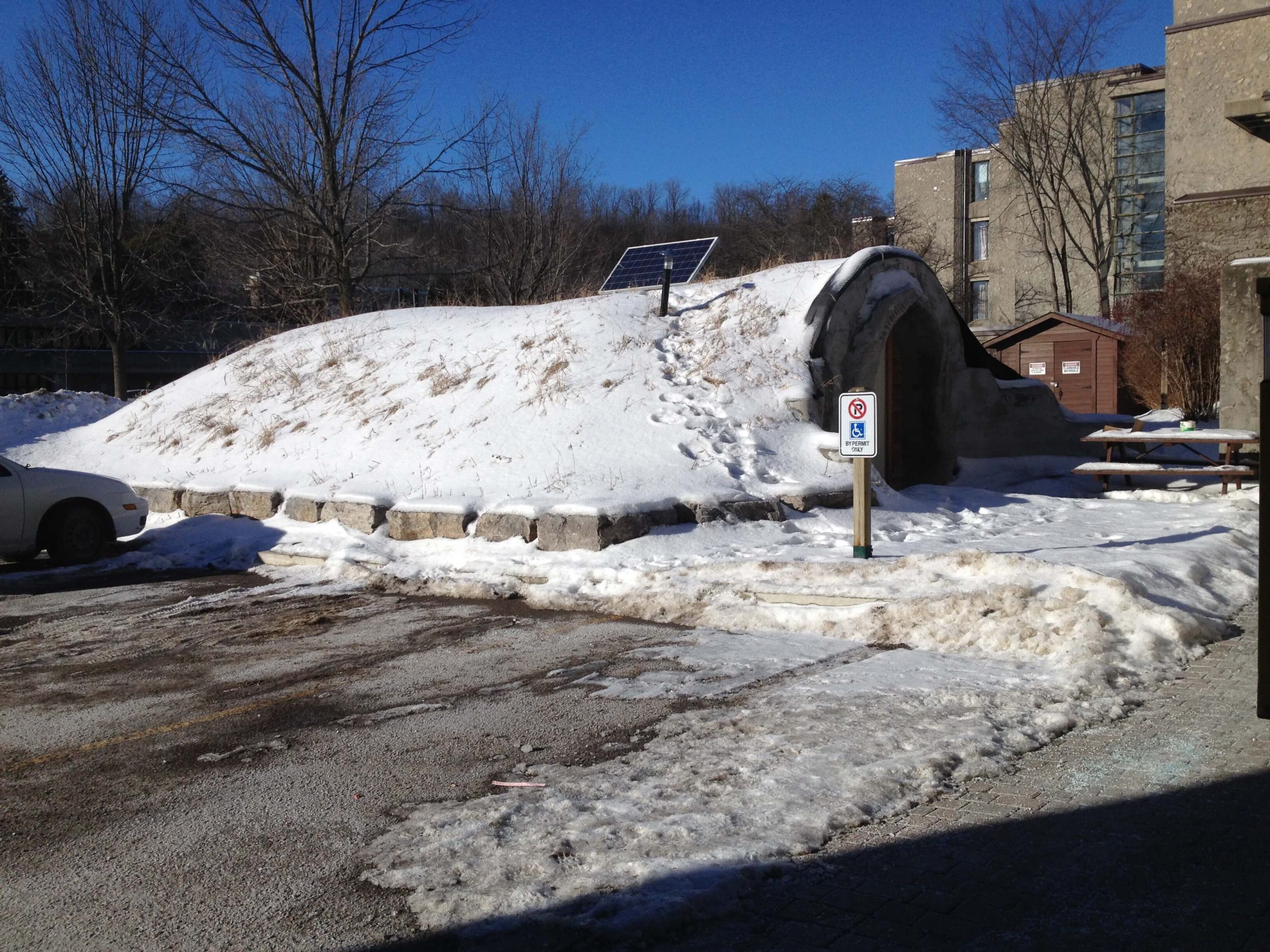In 2012, Endeavour helped to build a subterranean earthbag root cellar for the The Seasoned Spoon Cafe at Trent University. It was a fascinating project for which we could find very little in the way of research or documentation on which to base our design and systems. Now, after operating for three winters, this root cellar has been the focus of a research project by Martine Cleary through the Trent Community Research Centre.
Martine produced two documents from her research:
- Root Cellar Monitoring: An observational study of variation in temperature and humidity in a Southern Ontario root cellar PDF version of Martine Cleary’s report on The Seasoned Spoon Root Cellar
- Regional Root Cellaring: A report comparing four root cellars in Peterborough County PDF of Martine Cleary’s Regional root cellaring report2
The results of her work are very interesting, and will change the way we approach root cellar design in the future.
Earth Coupling Strategy
Our approach with the Seasoned Spoon root cellar was to try to have the base subterranean soil temperature be the determining influence on the root cellar temperature. The cellar was designed to be entirely earth bermed, with the walls buried in soil and the roof covered with a minimum of 2ft of soil. To keep the cellar from getting too cold, we insulated the roof area as we were concerned that outdoor temperature might cool the cellar down too much. The ventilation tubes for the cellar were run around the perimeter of the footings before we backfilled, providing 60-70 feet of “earth-tube” for each of the two intake pipes, and this was also done to ensure that freezing winter air was tempered so as to not lower the cellar temperature.
Need More Cold Air Influence
As it turns out, the base soil temperature is warmer than the cellar would be, ideally, and that we actually could have used the sub-zero air temperatures to bring the root cellar into its ideal temperature range of 1-4C. With that in mind, we would strongly consider leaving a portion of the cellar unburied and exposed to the winter air. And we would definitely have the fresh air intakes come directly from outside and into the cellar, which would help to bring the temperatures down in a controlled manner.
At the Circle Organic Farm root cellar, we had concerns that the exposed end of the buried quonset hut that forms the cellar would make the cellar too cold in the winter. But from Martine’s report, it looks like that cellar stays much closer to the optimum temperature because of the influence of low outdoor temperatures.
Root Cellaring Definitely Viable
We were happy to see in the report that the potatoes and carrots studied in Martine’s paper did well (often better than the samples that were refrigerated!), and that a growing number of farms are looking to modernize this low-tech and low-energy means of winter food storage. We’ll be excited the next time such a project comes our way!





















